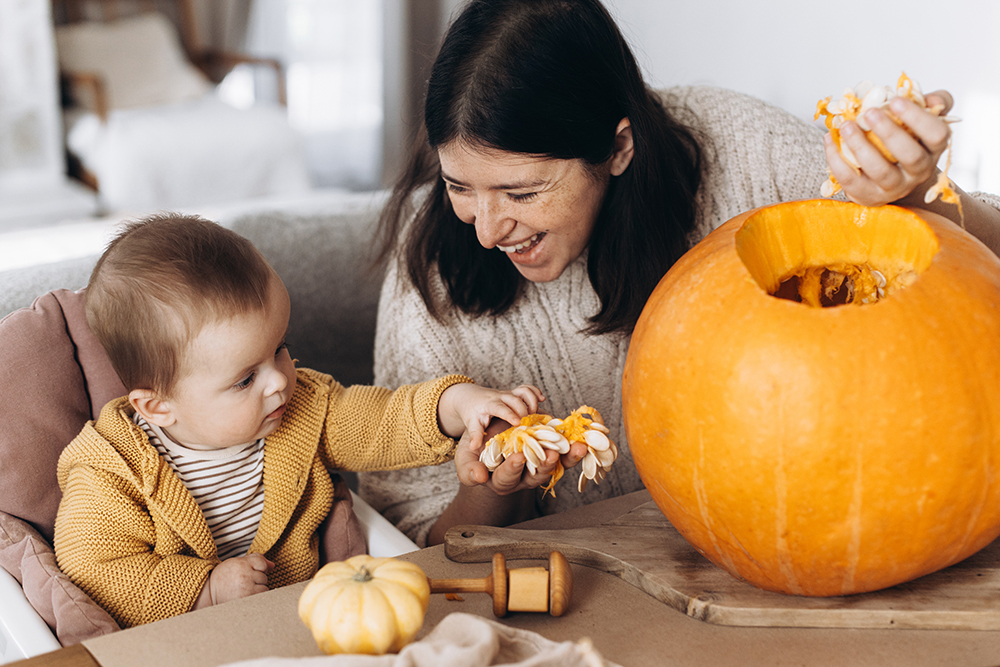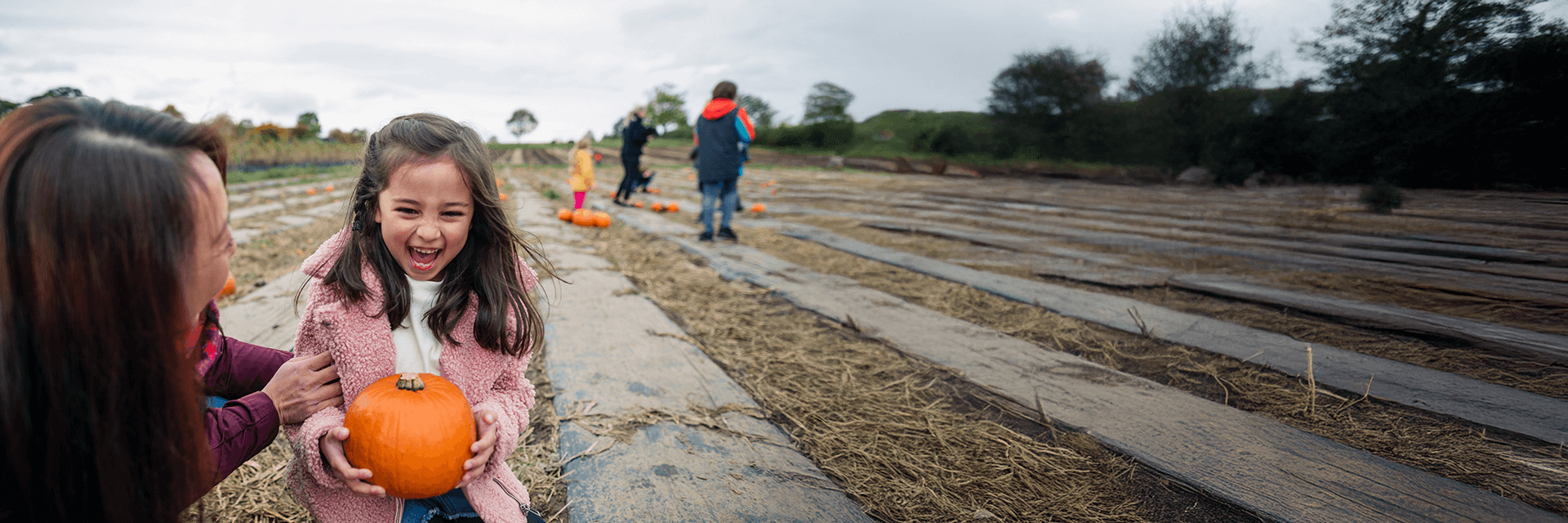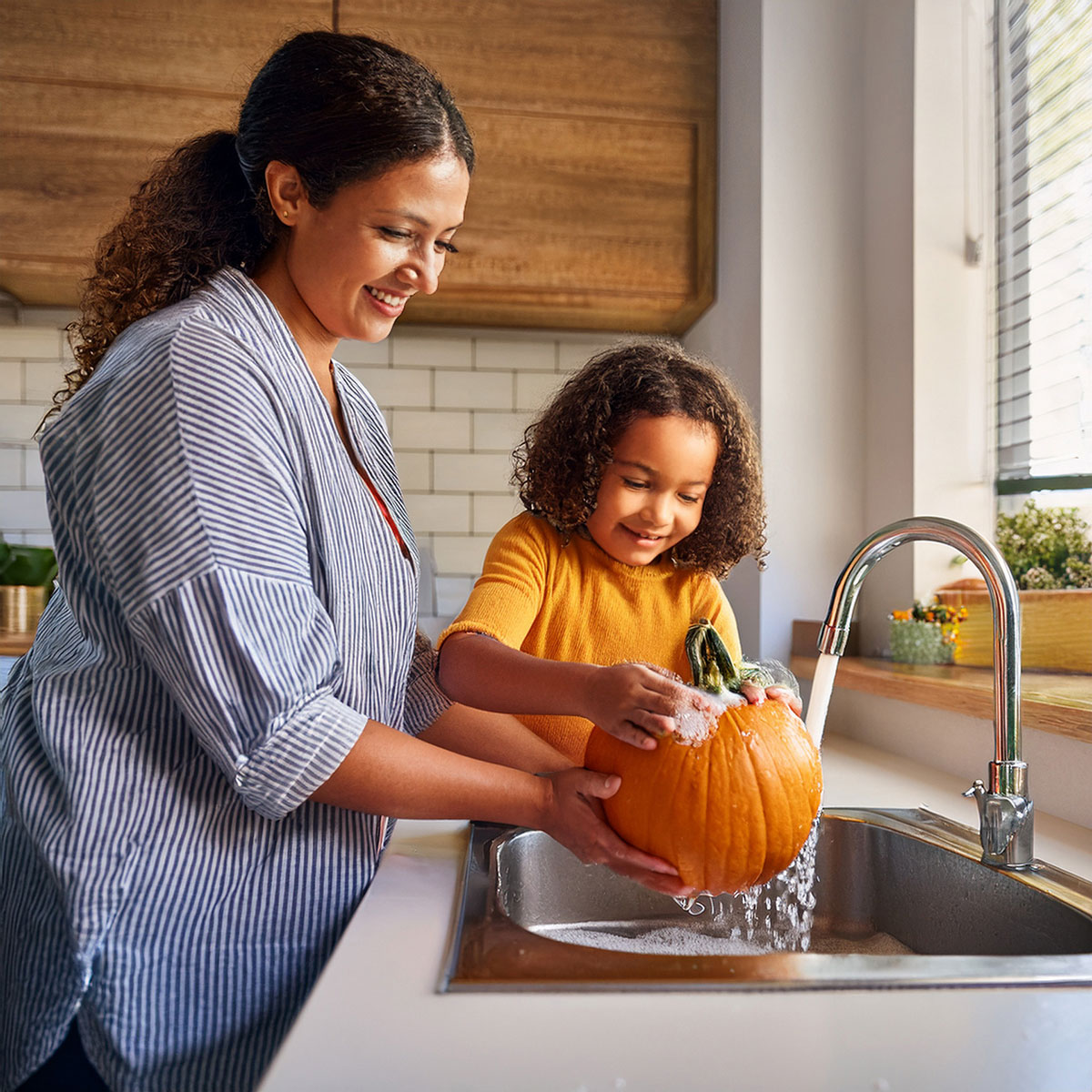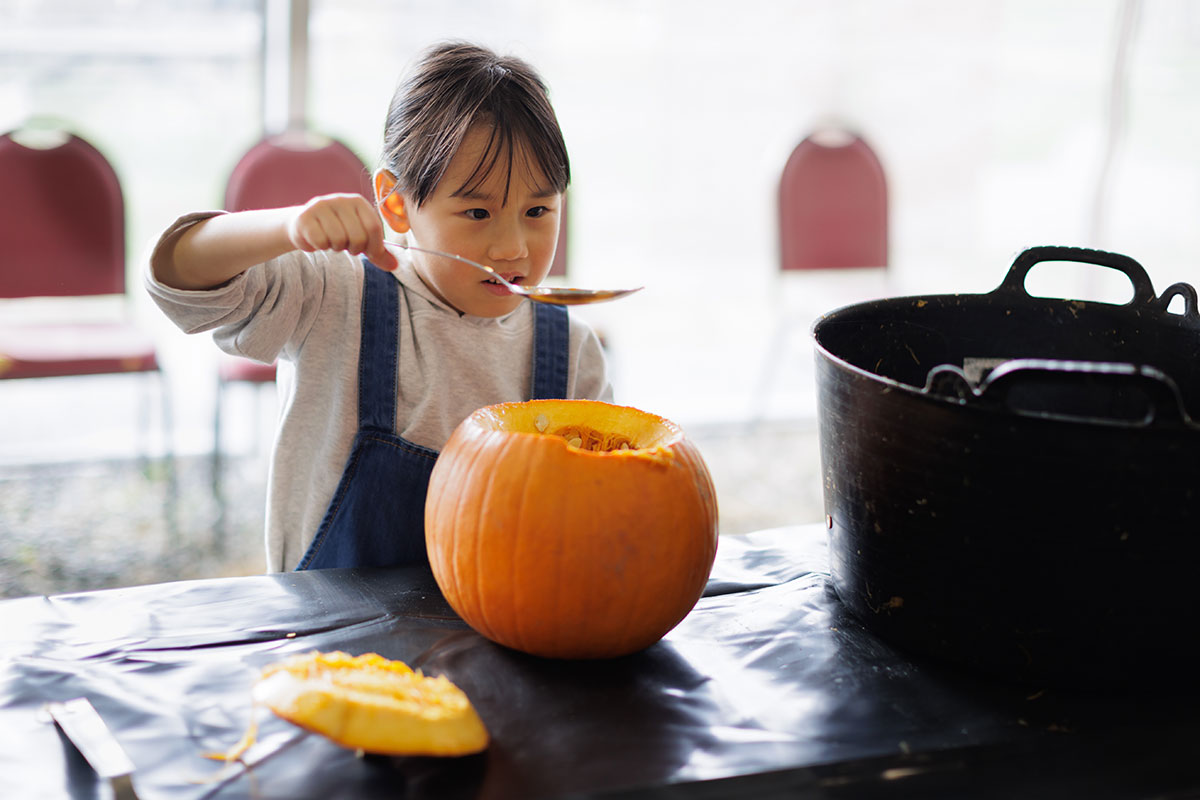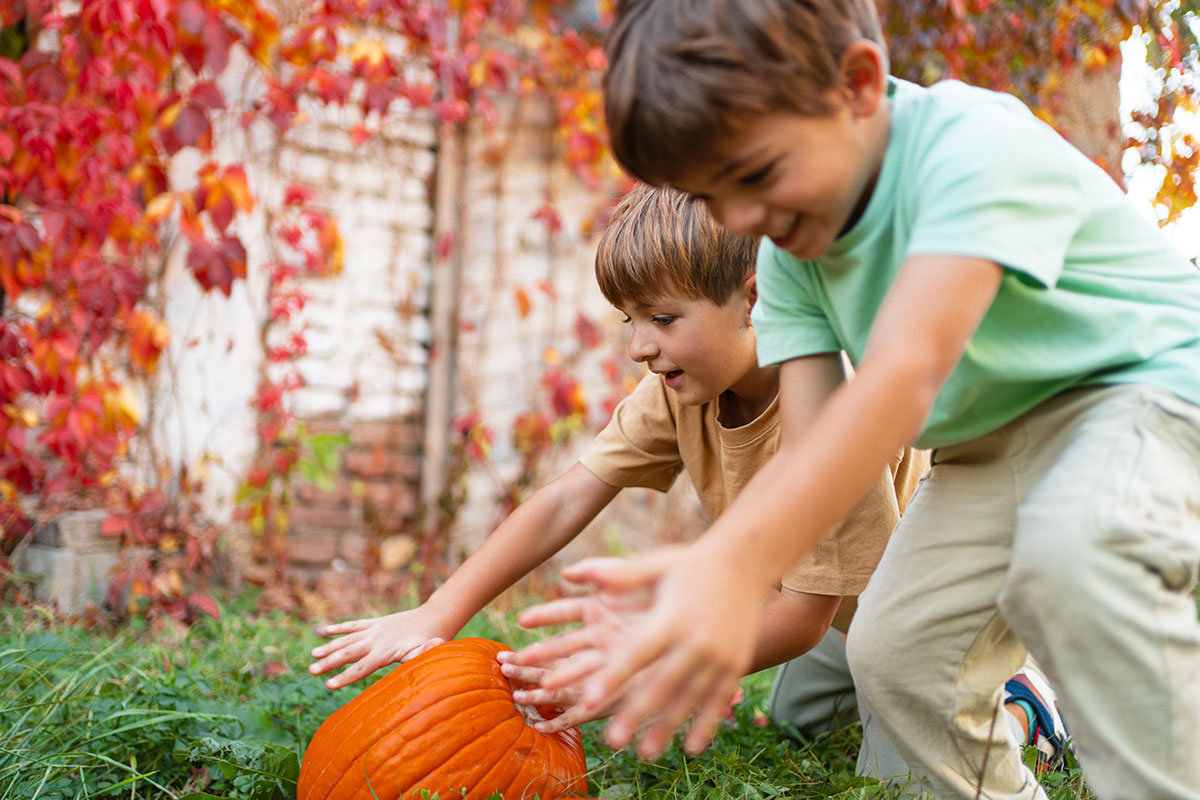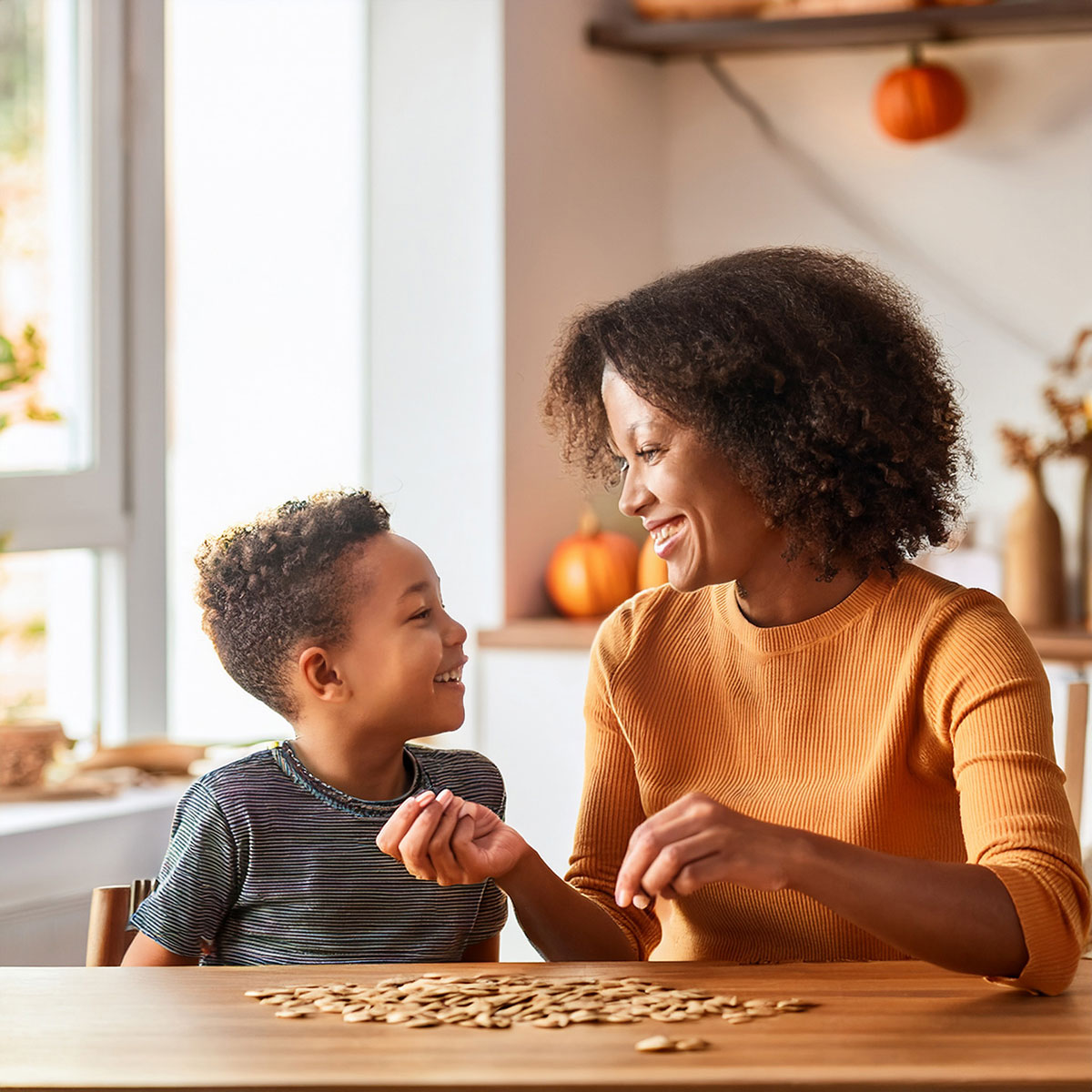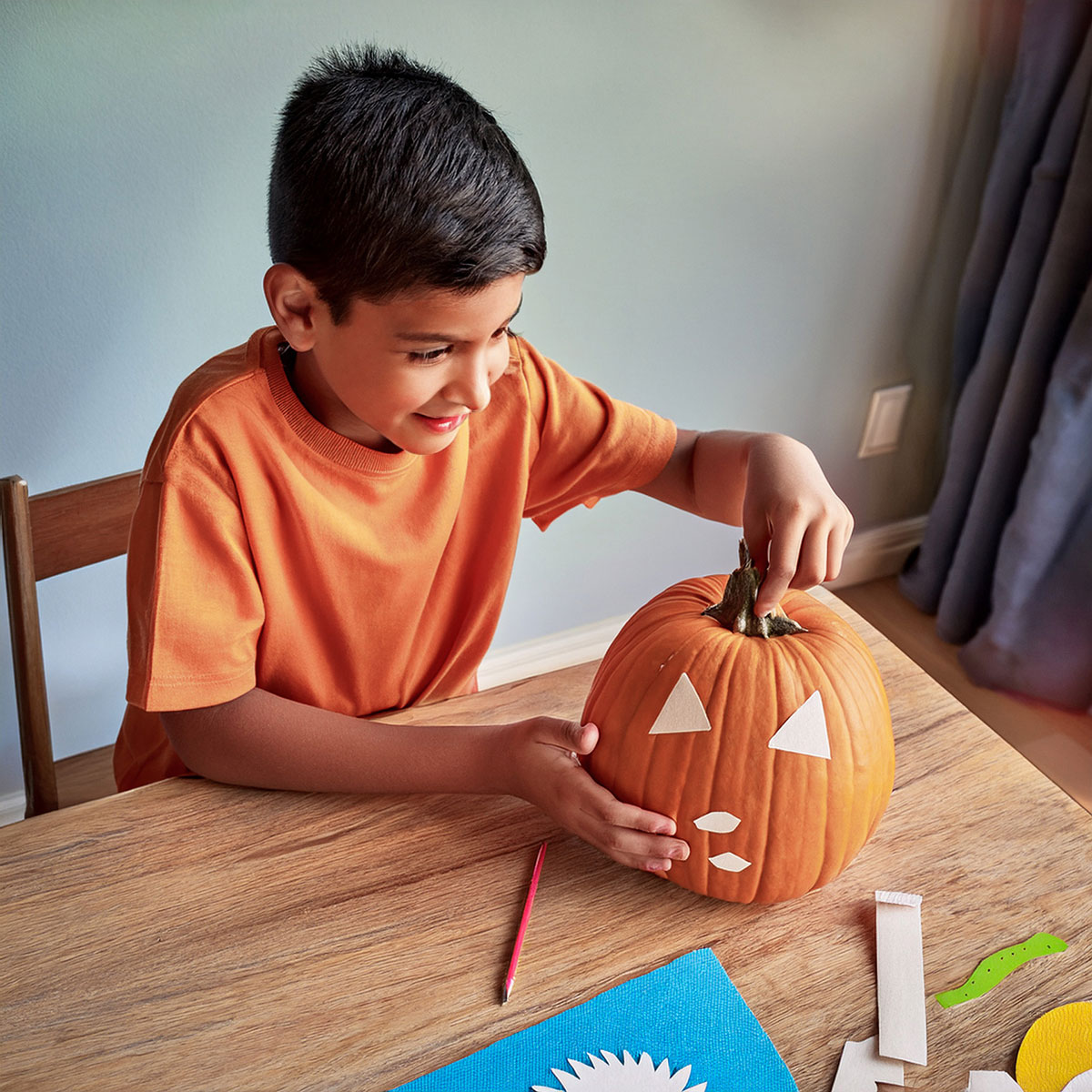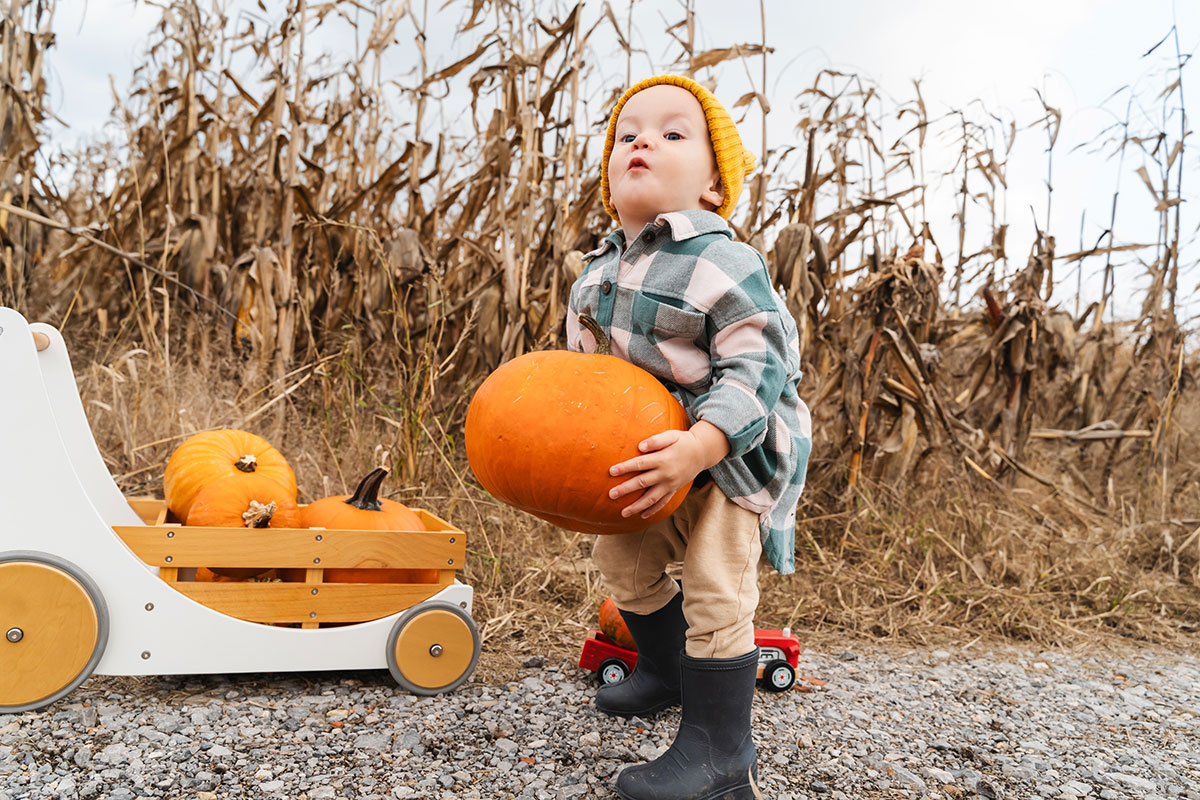Play, Learn, and Grow with Pumpkins
Pumpkins aren’t just for carving! They’re healthy, fun, and great for learning, too.
Pumpkins are full of good stuff like vitamins A and C. These help keep your child’s eyes healthy and support their immune system, which helps them fight off sickness. Pumpkins also have fiber, which helps with digestion and keeps your child feeling full longer.
